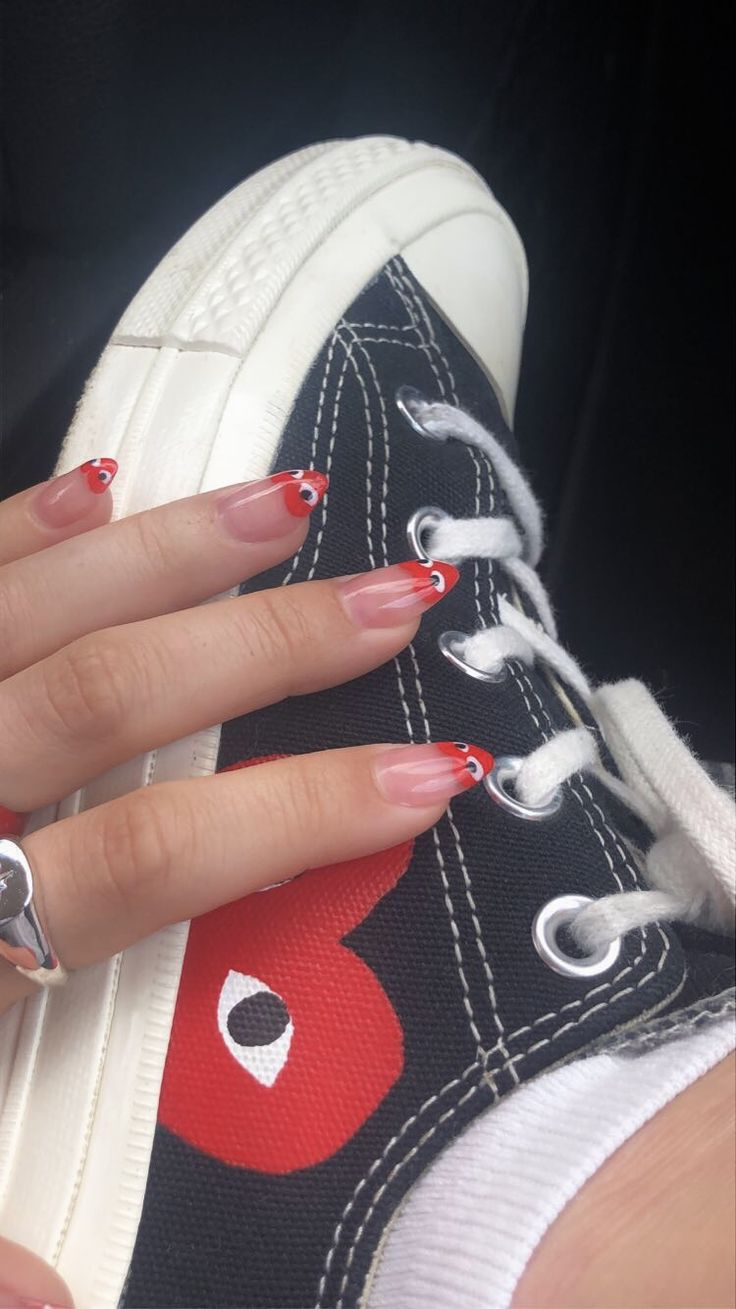Here are some key aspects that contribute to the unparalleled style and innovation of Comme des Garçons hoodies:
Architectural Design:
Rei Kawakubo is known for her architectural and sculptural approach to fashion. Comme des Garçons hoodies often feature unconventional shapes, asymmetric designs, and exaggerated proportions. The brand’s willingness to experiment with form and structure sets its hoodies apart from conventional methods.
Avant-Garde Aesthetics:
Comme des Garçons is synonymous with avant-garde fashion. The brand embraces unconventional aesthetics, pushing boundaries and challenging mainstream ideas of beauty. This is reflected in their hoodies’ bold patterns, unique graphics, and unexpected combinations of materials and textures.
High-Quality Materials:
The brand strongly emphasizes craftsmanship and high-quality materials. Comme des Garçons hoodies are often made from premium fabrics, ensuring comfort and durability. The attention to detail in material selection contributes to the overall luxury and longevity of the garments.
Graphic Innovation:
Comme des Garçons is known for its innovative graphics and prints. Hoodies from the brand often feature eye-catching and thought-provoking designs, ranging from abstract patterns to bold logos. The graphic elements are a crucial part of the brand’s identity and contribute to the distinctive look of their hoodies.
Limited Editions and Collaborations:
Comme des Garçons frequently releases restricted edition items and collaborates with other brands or artists. This strategy adds an element of exclusivity and collectibility to their hoodies. Limited availability and unique collaborations make each piece a sought-after fashion statement.
Streetwear Influence:
Comme des Garçons successfully blends high fashion with streetwear influences. Their hoodies often incorporate elements of urban style while maintaining a level of sophistication that appeals to a diverse audience. This fusion of styles contributes to the brand’s broad appeal.
Cultural Impact:
Comme des Garçons has significantly impacted global fashion trends. The brand’s willingness to challenge the status quo and redefine fashion norms has influenced designers and fashion enthusiasts worldwide. Comme des Garçons hoodies, as iconic pieces, carry a cultural significance beyond their function as clothing.
In summary, Comme des
Garçons hoodies stand out for their avant-garde design, innovative graphics,
and high-quality craftsmanship.
Founding and Early Years (1969):
Rei Kawakubo founded Comme des Garçons in Tokyo in 1969. The initial boutique, which opened in the fashionable district of Aoyama, sold clothing from various international designers. However, it wasn’t until the 1970s that Kawakubo began designing her collections.
Paris Debut (1981):
In 1981, Comme des Garçons debuted on the international fashion stage by showcasing a collection in Paris. The group, characterized by its monochromatic and asymmetrical designs, caught the fashion industry’s attention and marked the beginning of the brand’s global influence.
Anti-Fashion Philosophy:
Rei Kawakubo is known for her avant-garde and anti-fashion philosophy. She challenges established norms of beauty and style, often creating designs that provoke thought and push the boundaries of traditional fashion. The brand’s unconventional approach has set it apart from mainstream fashion houses. The brand has played a pivotal role in shaping the contemporary style landscape, challenging conventions, and defying traditional norms. Here’s a brief history of Comme des Garçons:
Dover Street Market (2004):
In 2004, Comme des Garçons opened Dover Street Market in London. This concept store in Tokyo, New York, Singapore, Beijing, and Los Angeles provides a unique retail environment that showcases Comme des Garçons alongside other avant-garde and luxury brands. The brand’s commitment to pushing the
boundaries of fashion have made its hoodies, not just clothing items but wearable
pieces of art that reflect the ever-evolving landscape of contemporary style.
Comme des Garçons, which translates to “like boys” in French, is a Japanese fashion brand founded by designer Rei Kawakubo in Tokyo in 1969
Comme des Garçons PLAY (2002):
Comme des Garçons PLAY, a more casual and accessible line, was launched in 2002. One of the signature features of the PLAY line is the iconic heart logo with two eyes, created by Polish artist Filip Pagowski. The line includes a range of t-shirts, sweaters, and accessories.
Rei Kawakubo at the Met (2017):
2017, the Metropolitan Museum of Art’s Costume Institute in New York featured an exhibition dedicated to Rei Kawakubo and Comme des Garçons. The show, “Rei Kawakubo/Comme des Garçons: Art of the In-Between,” highlighted Kawakubo’s innovative and boundary-breaking contributions to fashion.
Collaborations and Partnerships:
Comme des Garçons is known for collaborating with various brands and designers. These collaborations often result in limited edition and highly sought-after pieces. Notable collaborations include partnerships with Nike, Supreme, and many others. Comme des Garçons Hoodie continues to be a force in the fashion world, with Rei Kawakubo’s avant-garde vision influencing the brand’s designs and the broader conversation around fashion, art, and culture. The brand’s commitment to pushing boundaries and challenging the norm ensures its enduring impact on the global fashion landscape.
Innovations in Fragrance:
In addition to clothing, Comme des Garçons has made a mark in the fragrance industry. The brand has released a series of unconventional and artistic fragrances under the Comme des Garçons Parfums line, further extending its influence beyond fashion.
Comme des Garçons continuesto be a force in the fashion world, with Rei Kawakubo’s avant-garde visioninfluencing not only the brand’s designs but also the broader conversation





